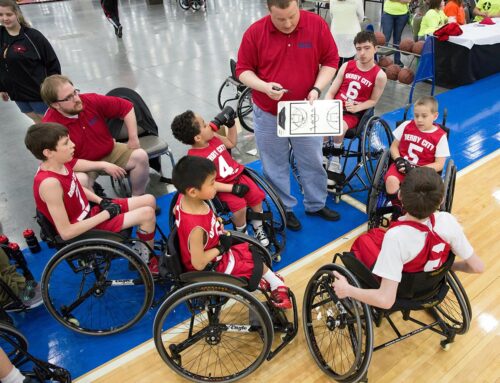Gross Motor Milestones In Babies With Down Syndrome/Trisomy 21
The most common statement we hear from parents of a child with a Trisomy 21 diagnosis is, “my baby is lazy!”
And our response is always “No! They have low muscle tone!” Followed by a detailed explanation on what muscle tone is. Perhaps that is where we should begin now, as well.
Muscle tone is defined as the readiness of a muscle to fire or activate. When a child has low tone — as all children with Trisomy 21 do — they have to work harder to activate their muscles than the rest of us do. Here’s an example: let’s say firing threshold for a muscle is 60% electrical activity. Normally you or I maintain a baseline of 25% activity, so we only need to jump from 25 to 60 when our brains decide we actually want to MOVE (turn a muscle fully on).
Now take a person with low tone. Maybe their baseline activation is 10%, so you can see how much harder it would be to activate 10 to 60, increasing activation by 50 percentage points versus only 35.
Another important concept to consider is your baby’s temperament. There are two types of kids out there, whether they have special needs or not: Movers and Observers.
Movers will naturally be easier to motivate to get that shiny fun toy just out of their reach, whereas Observers are happy to contemplate it. Athletes versus Philosophers, if you will.
If you combine your baby’s low tone with their temperament, it usually results in some degree of gross motor delay, which, for their diagnosis, is completely normal. Below is a listing of the major milestones for children with a diagnosis of Trisomy 21/Down syndrome:
Rolling from back to stomach: 7 months
Sitting: 11 months
Belly crawling: 14 months
Crawling on hands and knees: 17 months
Cruising along furniture: 18 months
Stands for 10 sec unsupported: 21 months
Walking: 26 months
Jumping: 47 months
Running: 52 months
Riding a tricycle: 61 months

One caveat: the above presumes your child did not have any major setbacks at birth, such as heart surgery or complications from extreme prematurity.
The take-home message for parents is two-fold:
- Stimulate your baby! Follow your physical therapist’s recommendations closely and give your baby lots of tummy time.
- Don’t fret! With the right stimulation, the vast majority of babies with Down syndrome reach all the same milestones as typically developing babies, but in their own time.

Eyas Landing is a therapy clinic with a mission to provide evidence-based and family-centered therapy services for children, adolescents, and their families. The primary goal is to deliver relationship-based interventions within the most natural environments and to empower families to reach their full potential. To achieve this goal, our highly educated, compassionate staff dedicates time and expertise to create experiences that maximize therapeutic outcomes. The strength, determination, and perseverance of our clients are evident as they succeed in therapy, and ultimately in their daily lives.
Eyas Landing offers a wide range of comprehensive services including Speech Therapy, Occupational Therapy, Physical Therapy, ABA Therapy, Social Work, Family Therapy, and Neuropsych testing. Services are provided throughout the Chicagoland area via Telehealth, In-Home, and in our state of the art clinic.
Want to learn more or you have a specific question? Feel free to connect with us here!



